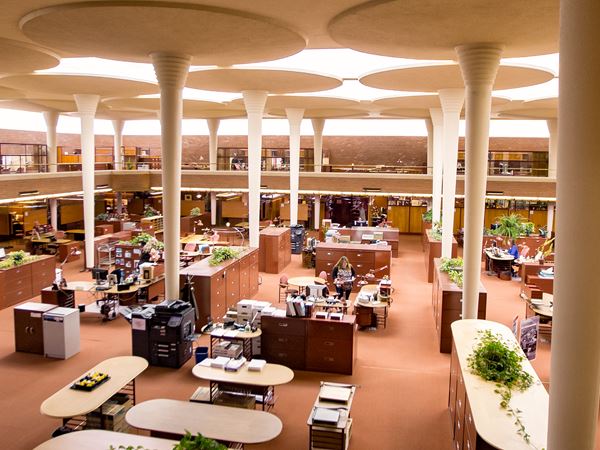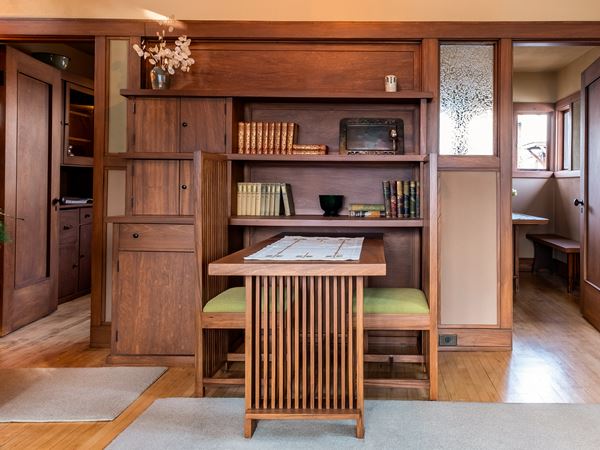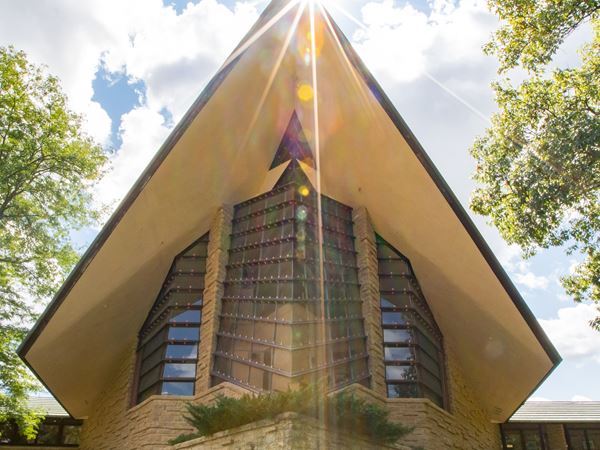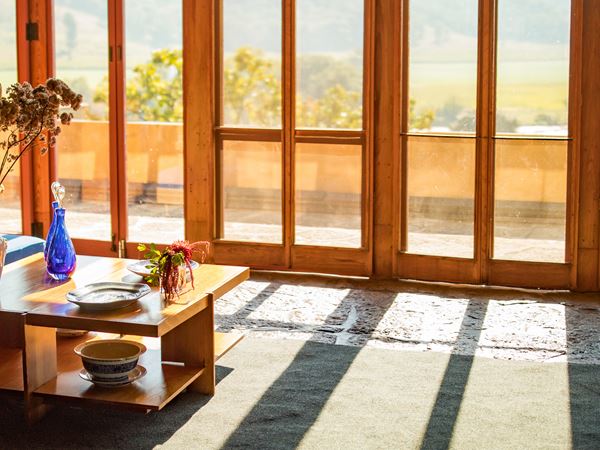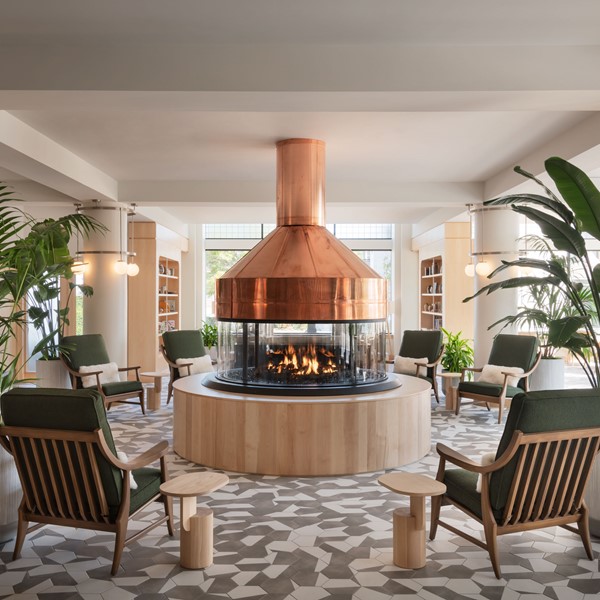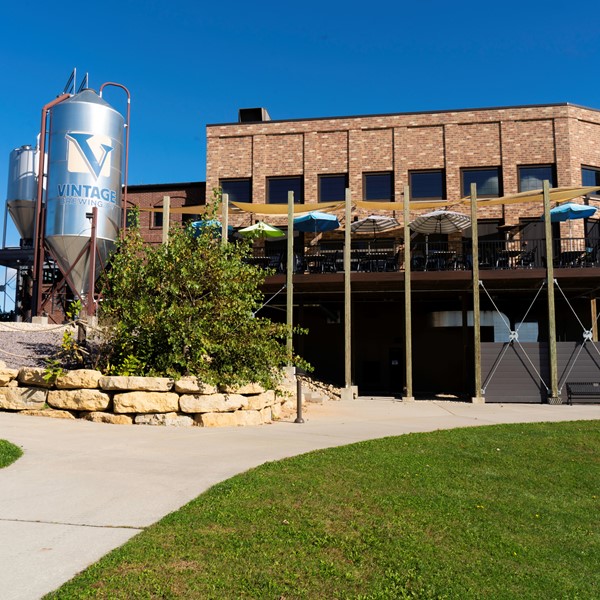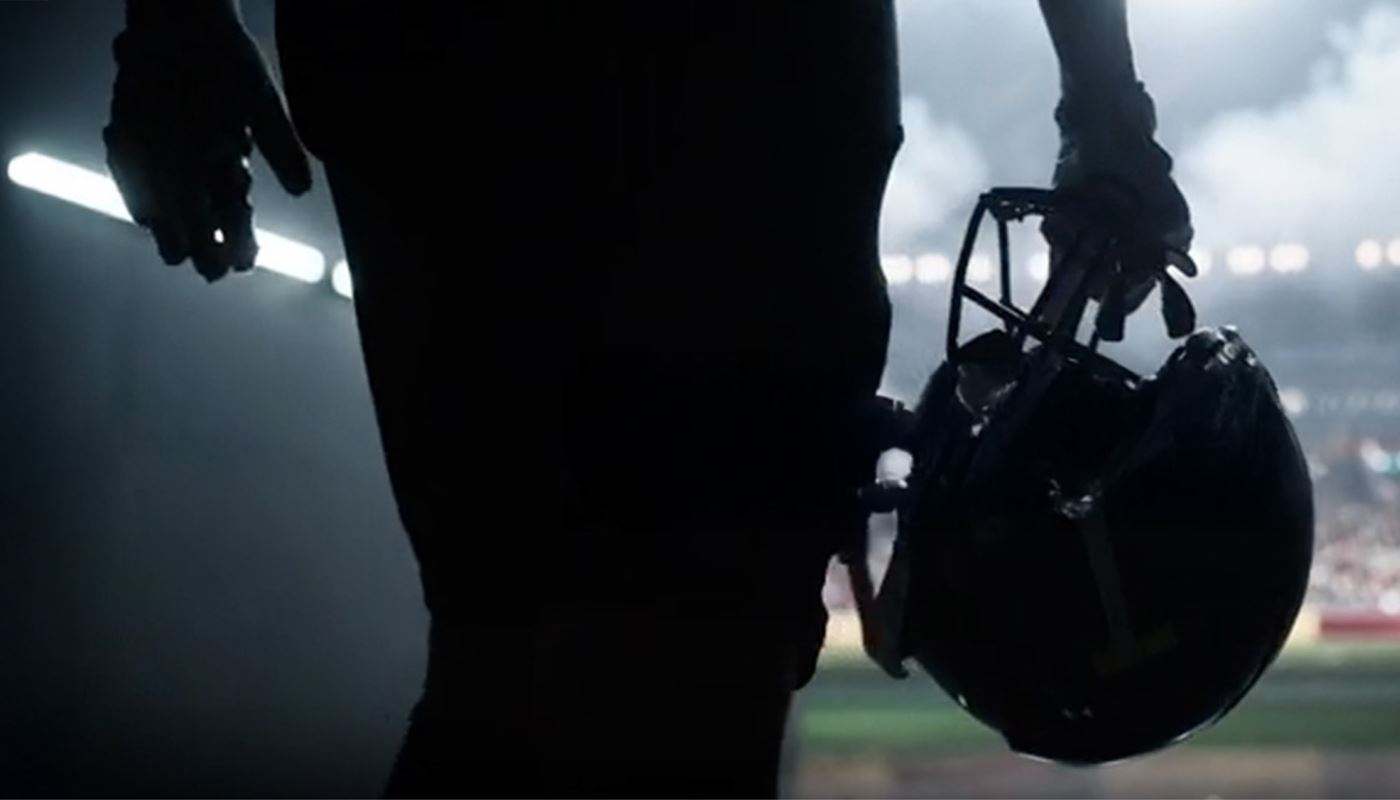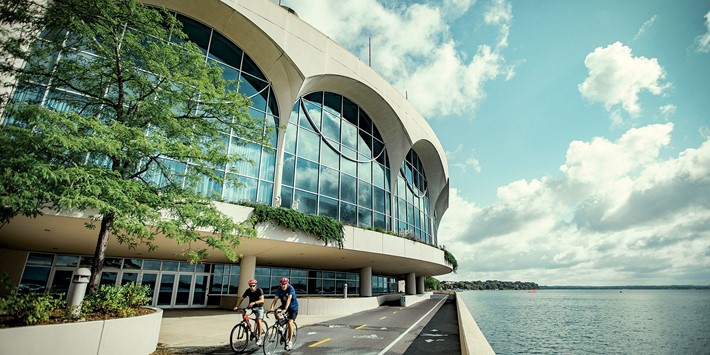
Wisconsin’s Frank Lloyd Wright Trail
One of America’s most famous architects was born and raised in Wisconsin, and you and your crew can explore many of his awe-inspiring works by following the Frank Lloyd Wright Trail. Take the self-guided tour through nine counties to glimpse nine of Wright’s masterpieces including his home and birthplace. And with so many welcoming spots to stop along the way, this is one road trip you and your group will remember for years to come.
Starting south of Milwaukee, the designated motor route includes stops in Madison before continuing on to Wright’s home in Southwest Wisconsin. The trail includes plenty of posted signs along the way to guide you on your architectural adventure.
The southern Wisconsin landscape’s dramatic bluffs and coulees inspired Wright’s natural, organic architecture and the style for which he is famous, the Prairie style. All told, more than a third of his buildings are on the National Register of Historic Places or are included in the National Register of Historic Districts.
While Wright’s structures are scattered throughout the world, Wisconsin is home to a great number of them in close proximity. Plan your trip, hop on the trail and discover what you didn’t know about this architect and his unique structures that each have a story of their own. There’s so much to do and see along the way!
This pair of impressive structures serves as the global headquarters of household cleaning product manufacturer SC Johnson.
The Administration Building, built in 1939, has been called one of the top 25 buildings of the 20th century, and Wright designed everything down to the furniture. Perhaps most impressive is the Great Workroom, with a half-acre of open space and massive tree-inspired columns.
The Research Tower, completed just more than a decade later, is one of the world’s tallest cantilevered buildings, meaning a horizontal structure only supported at one end. Like the Administration Building’s 43 miles of glass windows, Wright used thousands of Pyrex tubes to reduce glare and refract light in the tower. The building’s most renowned exhibit is a replicated 1950s laboratory, where the company’s scientists developed famous products like Glade, Pledge, Raid and OFF!.
Schedule your free guided tour ahead of time to explore these legendary structures.
If you’re looking for a bite to eat, share a Wells Brothers’ Pizza. Also nearby is O&H Danish Bakery where you can pick up an award-winning Kringle, Wisconsin’s official state pastry.
3. Wingspread – Wind Point
Wright’s work for the Johnson family didn’t end with their worldwide headquarters. H.F. Johnson Jr., the SC Johnson Company’s third-generation leader, also commissioned the architect to build his family estate. With four wings jutting out across 14,000 square feet of space, Wright completed his sprawling creation in 1939 and named it “Wingspread.”
Though it’s the largest of Wright’s Prairie-style houses, the estate stays true to the architect’s organic roots by blending into the surrounding 30 acres of woodland and prairie with the architect’s use of natural materials like limestone, brick, stucco and unstained wood. A 30-foot chimney rising to the middle of a teepee-inspired clerestory ceiling covered in windows combines to lift the home skyward. Make a reservation to tour this one-of-a-kind home and get an inside glimpse of Wright’s work.
Want to stay the night in the Racine area? Harbourwalk Hotel offers lakefront views of Racine Harbor, and sits right in the thick of downtown Racine’s shopping and dining district.
Wright didn’t just build custom mansions and towering workspaces – he had a dream of building homes that were affordable to the typical American family. His American System-Built Homes were a short-lived venture between 1915 and 1917, and just 16 of these models have been identified throughout the Midwest today.
This home is one of six still standing on West Burnham Street and Layton Boulevard in Milwaukee, a developing area that was still considered the edge of town when the houses were built in 1915 and 1916. Reserve your tour, on select weekends to learn more about this unique era of Wright’s work.
Milwaukee is a foodie’s dream, with restaurants of all styles, trends and specialties. Pop in to Leon’s Frozen Custard for a tasty scoop, or get your bloody mary fix at Sobelman’s Pub & Grill.
5. Monona Terrace Community and Convention Center – Madison
Popping out from the city’s skyline, Monona Terrace frames the lake for which it was named on the eastern side of Madison’s famed isthmus. Wright envisioned that his “dream civic center” would link the shores of Lake Monona with the Wisconsin State Capitol, and though the building itself doesn’t stretch that far, it’s just a short, straight walk to the Capitol building.
Though Wright first proposed the project in the 1930s, numerous setbacks meant the terrace wasn’t completed until 1997, nearly four decades after his death and 59 years after the inception of the project. Today, Monona Terrace is a popular spot for meetings and conventions, community programs and weddings, with an on-site café and gift shop full of Wright memorabilia. The building is open to the public daily, and tours are given on Thursdays, Fridays and Saturdays for a small fee.
Located right in the heart of downtown Madison, stroll to the nearby State Capitol, explore the vivacious shops of State Street or stop into The Old Fashioned for a Wisconsin classic: an Old Fashioned.
Wright was a member of this Madison congregation, and his preacher father was one of the founders. What has become one of the architect’s most famous commissions was also one of the closest to his heart. It was completed in 1951, just a few years before his death, and has been hailed as one of the world’s most innovative examples of church architecture, as well as a key structure defining Wright’s contributions to American culture.
Schedule a guided tour on Sundays year-round and on weekdays from April to October.
Stay somewhere in Madison that also has a bit of history and character. Mansion Hill Inn and Livingston Inn, both beautiful bed and breakfasts, offer cozy hospitality that combines historical home with modern accommodations.
For the Frank Lloyd Wright fan, nothing tops his 800-acre estate in Spring Green overlooking the Wisconsin River. Taliesin, which means "shining brow" — a nod to Wright’s Welsh grandparents — has been rebuilt from two fires since construction was completed in 1911, and other renovations have been ongoing since the architect’s death in 1959.
Today, the Taliesin Preservation manages the grounds and offers several touring options of the estate from April to October, along with other arts and cultural educational programs.
8. Wyoming Valley School Cultural Arts Center – Spring Green
Located three miles from Taliesin, Wyoming Valley School is a nonprofit organization promoting the arts and culture of the surrounding region. Designed and donated by Wright in honor of his mother, Anna Lloyd-Jones Wright, the School provides spaces for workshops, performances, lectures and exhibits for all ages. While paying homage to Wright, the School offers the necessary opportunities to bring young students and their families together in pursuit of creative education.
Workshops in architecture, music, science and painting are some of the offerings available to engage young students and enhance arts education and creativity.
Stay nearby at Round Barn Lodge, featuring rustic décor and eco-friendly amenities. Or, if the whole family is tagging along, rent out Aldebaran Farm, which was the home of Wright’s uncle, James Lloyd-Jones, and renovated by Wright’s architect son-in-law William Wesley Peters.
9. AD German Warehouse – Richland Center
Completed in 1921, this four-story warehouse is probably the most notable commission Wright took on in his hometown. Once a storage place for sugar, flour, coffee, tobacco and other commodities, today it houses a gift shop, small theater and exhibit of large murals illustrating Wright’s architectural work.
The warehouse is notable because it’s one of the few major public buildings he designed around that time that was actually built, and it’s his best remaining example of sculptural ornamentation. Visit on Sundays for a tour and learn more about this interesting construction. After your visit, enjoy a bite to eat together at Mellem’s Fish House.
Extend your stay and be even more immersed in Wright’s style by booking these lodgings with ties to the famous architect.
